Counterpoise at The Red Head Gallery, Fall 2015







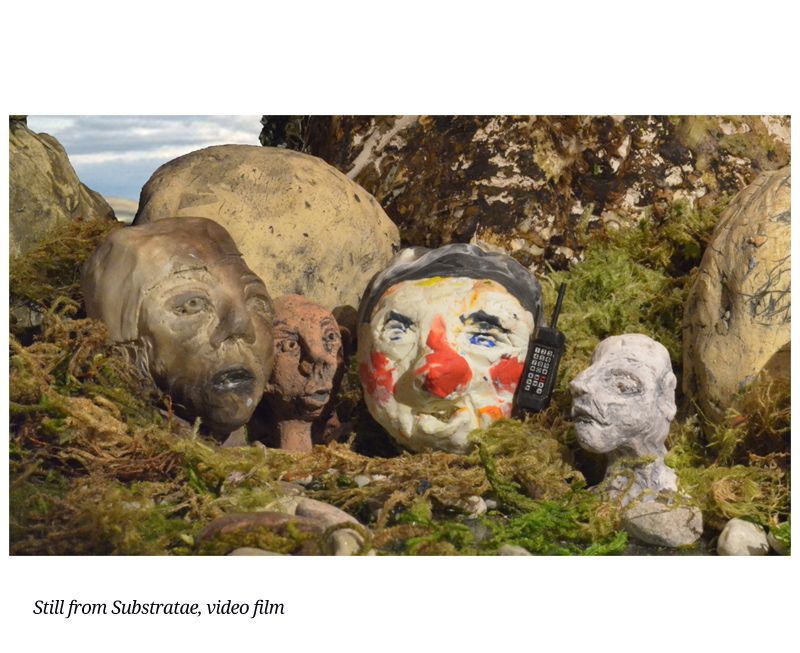



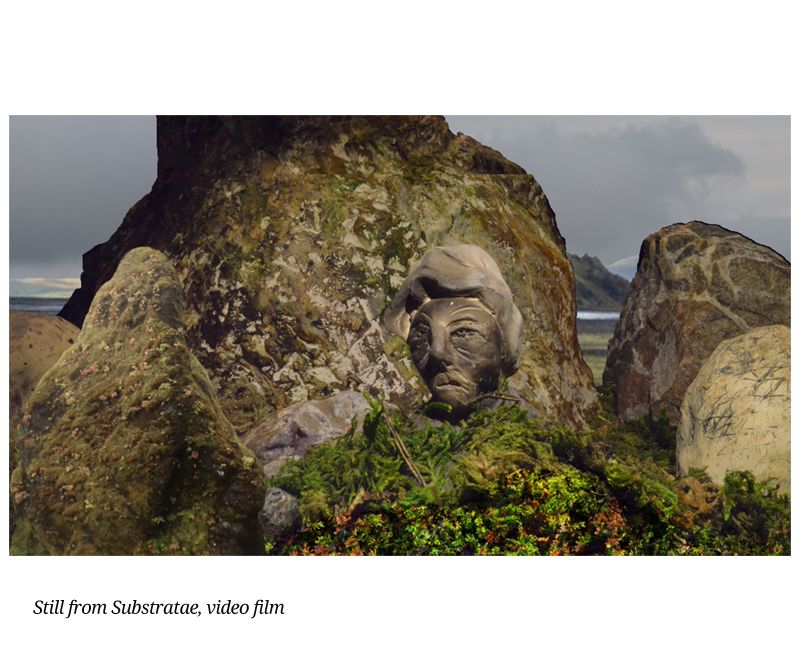
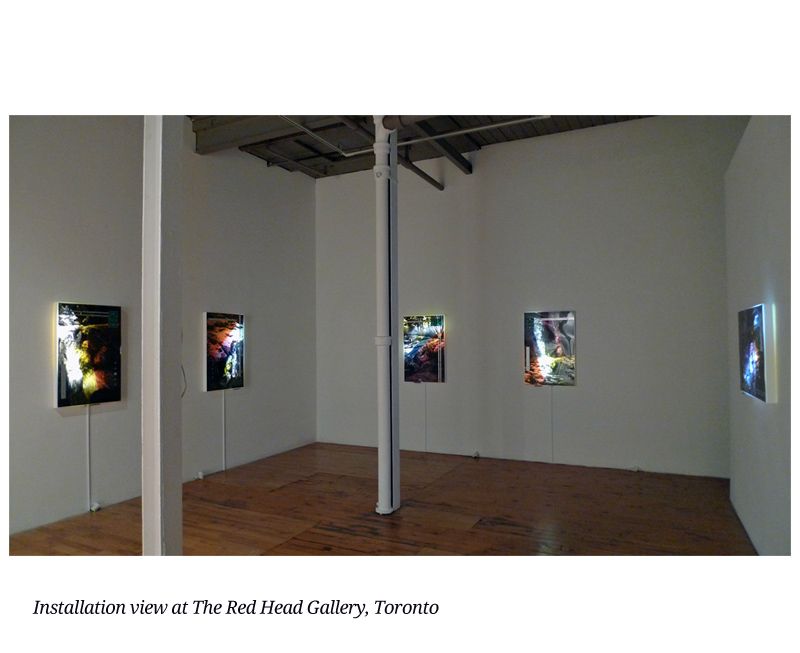
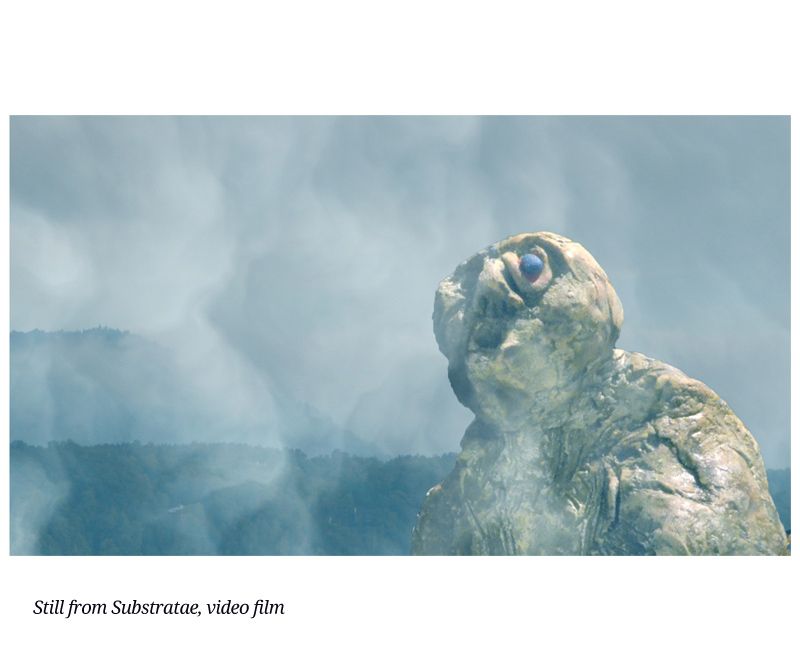
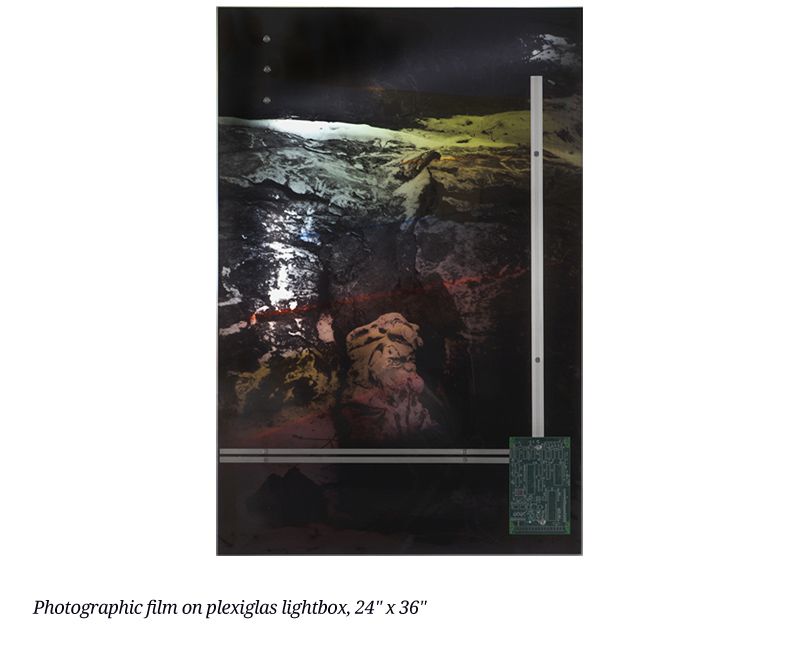

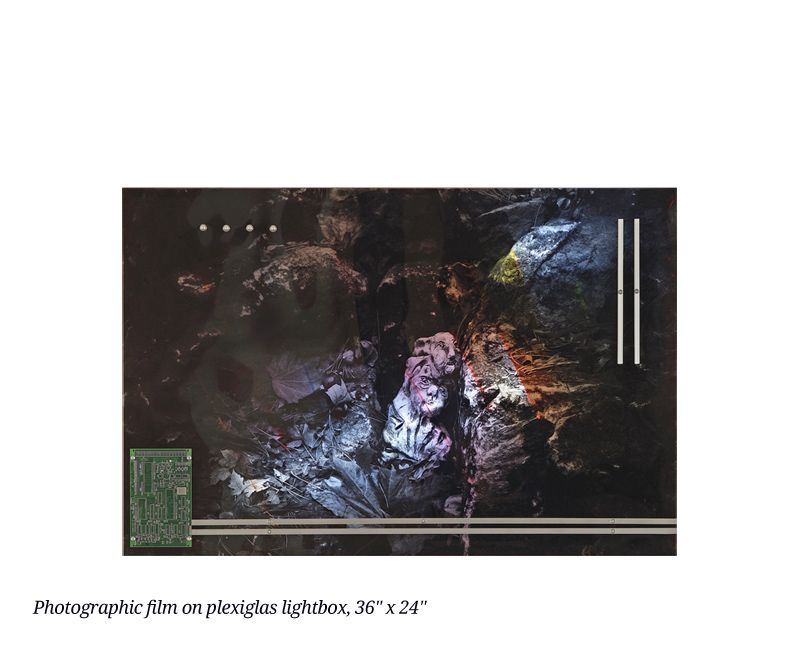




Text by Otino Corsano
In her new series of light-boxes, animation and sculptures, Margie Kelk craftily serves up a refreshing artistic formula with clarity —albeit, with a discourse still difficult to trace. Rather than distilling from art history, Kelk’s new collection builds from an unexpected conceptual wellspring. This allows for an essential and unique narrative to form the foundation for her original aesthetics involving the explorations of earthly artistic vitalism.
“Startling”is an accurate term to describe my first experience of these light-boxes. After all, I was quite familiar with Kelk’s output of highly textural paintings, sculptures of human heads in various mechanical configurations as well as her Asian inspired book works. Turning the corner of the hallway leading to her home studio, I entered the workspace to view a group of large Plexiglas boxes featuring darkened images beneath the steel lines and circuit boards riveted to their surfaces. It was the moment Kelk revealed to me she was able to adjust the luminosity of these works remotely when, both figuratively and literally, a new light was triggered. With small hand-held controls, the works were quickly set to alternating and distinct undulating rhythms of pulsating light. The wall was set to life. Kelk’s signature human heads figuring in black and white photographs became alive in the natural landscapes they inhabit. These faces of clay emerged from and retreated back to the rocky surfaces which appear to have given them birth. Layers of hyper-neon Plexiglas filled the inside of the tableaux adding vivid tints to the backlit images.
Kelk’s focus here was to re-contextualize her sculptural works and create new mythologies championing subterranean forces. In these composed visual stories, power hierarchies are inverted with peak energies brewing from within ever shifting plateaux altered by eternal animistic energies. Electronics are both the conductors of this energy as well as the products of these earthly power currents. The sculptures are the personification of this machine life force born from its organic and environmental sources.
With a vast number of evolving glaciers, geysers, natural springs and pioneering geothermal energy experiments, Iceland is a hotspot of creative research for Kelk’s theoretical musings on an organic electronic genesis. Icelandic folklore talks of the Huldufólk, the hidden people believed to reside in rocks found in the volcanic landscape of the island. Some folk tales trace the origins of the hidden people to the Biblical story of Eve hiding her children from God. The challenge Kelk’s artwork offers is the attempt to de-spiritualize this mythology and recognize the forces at work as solely empirical geological realities. It is a difficult task on many fronts. First, the manner in which these light-boxes glow with a warm Rubenesque radiance and luminosity makes it hard to separate Kelk’s subjects from the classical heroic patterns of Western Art aesthetics and its inherent religious history. Rather than irony, Kelk employs a soft luminance to subtly replicate the hidden geological movements beneath the surface she wishes to spotlight. These science-centred mythologies also play out in real time in a stop-motion animation titled Substratae. Kelk produced this digital animation with the assistance of animator Lynne Slater.
In Substratae, Kelk’s signature portrait characters star in technologically motivated activities and movements. Reminiscent of early National Film Board of Canada experimentations and children’s television programming from the seventies, the animation reveals this organic electronic narrative in motion. The earthen heads are less monumental than evolving from their natural surroundings. They are both technological and natural in the way they communicate and even kiss. They are metaphors for our contemporary digital life structures reverted back into the analog forms from which they first emerged. Alan Sondheim, an experimental computer theorist and sound artist, created the original score for the animation. Sondheim employs the guqin, a seven-stringed Chinese instrument of the zither family, to weave an enchanting musical bed of perfect choreography for Substratae.
Kelk also showcases a new cast of her portrait characters in a limited series run of small sculptural works. The varied patina heads appear as miniature statues on clear acrylic bases. They resemble motion picture awards. Kelk isolates and removes these earthen peoples from their hiding places. They appear as prizes from an alternate mythical archive sans transgression.
The artistic desire to quench the thirst for both distinct visual forms and, more importantly, a succinct conceptual mythology as necessary compendium, is satisfied in Kelk’s trilogy of new work. That it is built on a complexity of moving elemental bodies or ever changing states, rather than a distilled, albeit refining, historical narrative, allows viewers a different initiation to electronic life juxtaposed against more predictable digital deconstructions.
Otino Corsano is a new genre artist who writes as part of his neo-conceptual art practice.
photography by David Williams